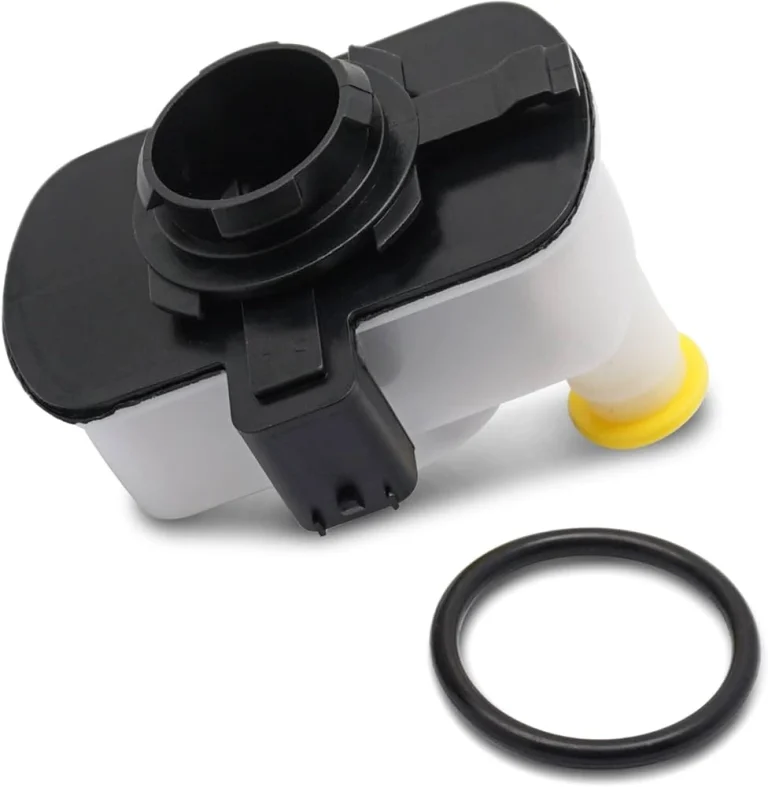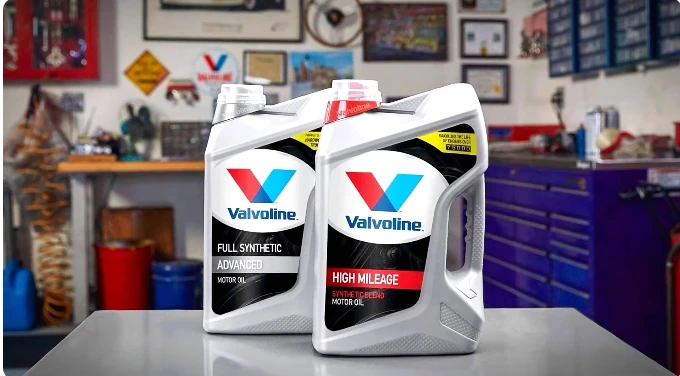How to Quickly and Safely Restart Your Car After Running Out of Oil
To start a car after running out of oil, add the required amount of oil to the engine and turn the ignition key. Running out of oil can be detrimental to the engine’s performance and can potentially cause severe damage.
When a car runs low or completely out of oil, the engine lacks the necessary lubrication, which can lead to excessive friction and overheating. If you find yourself in this situation, it is important to act quickly. First, check the oil level indicator on your car’s dashboard to confirm the oil status.
If the indicator shows that the oil is low or empty, park your car in a safe location and turn off the engine. After allowing the engine to cool down for a few minutes, open the hood and locate the oil cap. Add the recommended amount of oil suitable for your vehicle’s engine. Once the oil is added, securely close the cap and turn the ignition key to start the car. Be sure to monitor the oil levels and check for any signs of engine damage.
Signs That Your Car Has Run Out Of Oil
Running out of oil can cause serious damage to your car’s engine. It is important to be aware of the signs indicating that your car is low on or has run out of oil. By monitoring these signs, you can take prompt action to prevent further damage.
Here are some key indicators to watch out for:
Checking The Oil Gauge
- Look at your car’s oil gauge on the dashboard. If the gauge shows that the oil level is significantly below the recommended level, it is a clear sign that your car is low on oil.
- Inspect the color and consistency of the oil on the dipstick. If the oil appears darker and sludgy, it may indicate a low oil level. Fresh oil should have a clear amber color.
Monitoring Engine Performance
- Pay attention to any changes in your car’s performance. If you notice that your car is experiencing a decrease in power or acceleration, it could be due to a lack of proper lubrication caused by low oil.
- Keep an eye on the engine temperature gauge. A sudden rise in temperature can be a result of insufficient lubrication, as the oil acts as a coolant for the engine.
Listening For Unusual Noises
- Strange knocking or tapping sounds coming from the engine can be an indication of low oil level. This occurs because the engine components are not properly lubricated, causing friction and resulting in these unusual noises.
- If you notice any grinding or metallic sounds, it could mean that the lack of oil has caused significant engine damage. In this case, it is crucial to seek professional help immediately.
Remember, regularly checking your car’s oil level and changing the oil as per the manufacturer’s recommendations is essential to avoid running out of oil. If you do find yourself in a situation where your car has run out of oil, follow the manufacturer’s guidelines for adding oil and seek professional assistance if you are unsure.
Taking proactive measures can save you from costly engine repairs and ensure the smooth functioning of your car.
Immediate Steps To Take If You Run Out Of Oil
Running out of oil in your car can be a stressful situation, but it’s important to remain calm and take immediate action to prevent any further damage. Follow these steps when you find yourself in such a situation:
Pull Over Safely
When you realize that you’ve run out of oil, the first thing you need to do is find a safe spot on the road to pull over. It’s crucial to prioritize the safety of yourself and other drivers. Follow these guidelines:
- Activate your hazard lights to alert other vehicles that you’re slowing down.
- Look for the nearest exit or a wide shoulder where you can safely park your car.
- Steer your vehicle gradually to the side of the road and come to a complete stop. Avoid sudden movements that could endanger yourself or others.
Turn Off The Engine
Once your car is safely parked, the next step is to turn off the engine. This will help to prevent any additional damage to your vehicle. Here’s what you should do:
- Locate the key in your ignition and turn it to the off position. Ensure that the engine has completely shut down.
- By turning off the engine, you are preventing further wear and tear on critical components that require lubrication.
Allow The Car To Cool Down
After turning off the engine, it’s important to allow your car to cool down before taking any further action. This will help protect your engine and other parts from overheating. Follow these cooling down procedures:
- Pop the hood of your car to allow heat to escape more quickly.
- Refrain from opening the radiator cap while the engine is still hot to avoid the risk of burning yourself.
- While waiting for the engine to cool, take the opportunity to assess the situation and determine your next steps.
Remember, running out of oil can have serious consequences for your car’s engine. Following these immediate steps will help minimize potential damage and increase your chances of safely starting your car again. However, it’s crucial to consult a professional mechanic to thoroughly inspect and address any issues caused by oil depletion.
Stay safe on the roads!
Step-By-Step Guide To Restarting Your Car Safely
Running out of oil in your car can be a nerve-wracking experience, but fear not! With the right steps, you can get your vehicle up and running again. Here’s a step-by-step guide to help you restart your car safely and avoid any further damage.
Checking The Oil Level
Before attempting to start your car, it’s important to check the oil level. Follow these steps to ensure you have enough oil in your engine:
- Pop the hood and locate the oil dipstick.
- Pull out the dipstick and wipe it clean with a rag or paper towel.
- Insert the dipstick back into the engine and pull it out again to check the oil level.
- If the level is below the minimum mark, you’ll need to add more oil.
Adding The Appropriate Amount Of Oil
Now that you’ve determined your car needs more oil, you’ll need to add the appropriate amount. Here’s how:
- Consult your car’s manual or the oil cap for the recommended oil type and quantity.
- Use a funnel to pour the oil slowly into the oil filler hole.
- Check the oil level again using the dipstick to ensure it reaches the recommended level.
Priming The Engine
Once you’ve added the oil, it’s important to prime the engine to distribute the fresh oil throughout the system. Follow these steps:
- Turn the ignition key to the “on” position without starting the engine.
- Let the car sit for a few minutes to allow the oil pump to distribute the oil.
- After a few minutes, turn the key back to the “off” position.
Filling Up With Fuel
Now that your car’s engine is primed, it’s time to fill up the tank with fuel. Remember, running out of oil can also cause the fuel system to run dry. Here’s what you need to do:
- Drive to the nearest gas station and fill up your tank with fuel.
- It’s recommended to add a fuel additive to clean and lubricate the fuel system.
Starting The Engine
With the oil and fuel replenished, it’s time to start the engine. Follow these steps to restart your car safely:
- Insert the key into the ignition and turn it to the “on” position.
- Wait for a moment and then turn the key to start the engine.
- Your car should start up smoothly if everything is in order.
Listening For Any Abnormalities
As your car engine runs, listen carefully for any unusual sounds or abnormalities. Here are some things to watch out for:
- Strange knocking or rattling noises could indicate engine damage.
- Excessive smoke or a burning smell could indicate oil leaks or other issues.
- If you notice anything out of the ordinary, it’s best to consult a mechanic.
Monitoring The Oil Pressure
While your car is running, keep an eye on the oil pressure gauge or warning light. Here’s what to look out for:
- The oil pressure gauge should show a stable reading within the normal range.
- If the gauge drops to a low level or the warning light comes on, it could indicate an oil circulation problem.
Continuing With Caution
After following these steps, it’s important to continue driving with caution. Keep these points in mind:
- Monitor the oil level regularly and top up as needed.
- Schedule an appointment with a mechanic to have your car inspected for any potential damage.
- It’s crucial to address the root cause of the low oil situation to prevent it from happening again.
Remember, running out of oil can have serious consequences for your car’s engine. By following this step-by-step guide and exercising caution, you can safely restart your car and take steps to prevent a reoccurrence.
Tips To Prevent Running Out Of Oil In The Future
Regularly check and maintain oil levels:
- Make it a habit to check your car’s oil levels on a regular basis, ideally once a month or before long trips.
- Open the car’s hood and locate the oil dipstick, which is usually bright-colored for easy identification.
- Remove the dipstick, wipe it clean with a cloth, and reinsert it fully.
- Pull the dipstick out again to check the oil level. It should be between the two markers on the dipstick. If the level is low, you need to add oil.
Schedule routine oil changes:
- Consult your car manufacturer’s guidelines to determine how often you should change the oil. Typically, it is recommended to change the oil every 3,000 to 5,000 miles or every three to six months.
- Regular oil changes help maintain the optimal performance of your engine and prevent it from running out of oil.
- If you’re not comfortable performing the oil change yourself, take your car to a reputable mechanic or dealership to ensure it is done correctly.
Address any oil leaks promptly:
- Regularly inspect your car for any signs of oil leaks, such as oil spots on the ground where you park or a noticeable decrease in oil levels between oil changes.
- If you notice a leak, it’s important to address it promptly. Oil leaks can lead to a significant loss of oil, potentially causing engine damage.
- Consult a mechanic to identify and fix the source of the leak. It could be due to a faulty gasket, worn-out seals, or damaged oil lines.
By following these tips and maintaining a proactive approach to oil maintenance, you can significantly reduce the risk of running out of oil in the future. Remember, prevention is key when it comes to keeping your engine running smoothly and avoiding costly repairs.
Importance Of Regular Vehicle Maintenance
Understanding The Impact Of Running Out Of Oil
Running out of oil in your car’s engine can have serious consequences. Oil plays a vital role in lubricating the moving parts of your engine, reducing friction, and preventing wear and tear. Without enough oil, your engine can suffer extensive damage that can be costly to repair.
Understanding the impact of running out of oil is crucial for maintaining the health and longevity of your vehicle.
Here are some key points to consider:
- Lack of lubrication: When the oil level in your engine drops, crucial components such as the pistons, crankshaft, and camshaft can rub against each other without proper lubrication. This can lead to excess friction, overheating, and increased wear on these parts.
- Increased heat: Without adequate lubrication, your engine can also generate more heat. This can cause the metal parts to warp or seize, leading to further damage and potential engine failure.
- Engine seizure: In extreme cases, running out of oil can result in engine seizure. This occurs when the moving parts become so hot and dry that they essentially weld together, rendering the engine inoperable. Engine seizure often requires expensive repairs or even a complete engine replacement.
Preventing Costly Engine Damage
Regular vehicle maintenance is essential in preventing costly engine damage caused by running out of oil. By following these key points, you can protect your engine and avoid potential headaches down the road:
- Check oil levels regularly: Make it a habit to check your engine oil levels regularly, especially before embarking on a long journey. This simple task can help you identify any oil leaks or low levels, allowing you to address the issue before it becomes more severe.
- Change oil regularly: Regular oil changes are crucial for maintaining the health of your engine. Over time, oil can become contaminated with dirt, debris, and other particles, reducing its effectiveness. Regular oil changes ensure that the engine is always supplied with clean, fresh oil for optimal performance.
- Use recommended oil: It’s essential to use the oil grade and viscosity recommended by your vehicle’s manufacturer. Different engines require specific types of oil to function properly. Using the right oil can help maximize engine efficiency and prevent premature breakdown.
Ensuring Optimum Vehicle Performance
In addition to preventing engine damage, regular vehicle maintenance, including maintaining proper oil levels, is vital for ensuring optimum vehicle performance. Here’s how:
- Improved fuel efficiency: A well-maintained engine runs more efficiently, which can result in better fuel economy. Adequate lubrication from clean oil reduces friction, allowing the engine to operate smoothly and reduce energy loss.
- Enhanced engine power: By keeping the engine properly lubricated with sufficient oil, you can ensure that it generates the power needed to propel your vehicle. This improves acceleration and overall performance.
- Prolonged engine life: Taking care of your engine through regular oil changes and maintenance can prolong its lifespan. Proper lubrication and minimized wear and tear help prevent premature engine failure, allowing you to enjoy your vehicle for years to come.
Regular vehicle maintenance, including monitoring oil levels and keeping them within the recommended range, plays a crucial role in ensuring your car’s performance, preventing costly engine damage, and extending its lifespan. By following these measures, you can avoid the pitfalls of running out of oil and enjoy a trouble-free driving experience.
Conclusion
It is crucial to remember that running out of oil in your car can cause significant damage to the engine. In this blog post, we have explored the steps you can take to safely start your car again after this situation.
By adding oil to your engine and checking for any leaks or damages, you can ensure that your vehicle is in good working condition. Remember to follow the manufacturer’s instructions and consult a professional if needed. Regular maintenance and checking your oil levels can help prevent this situation in the first place.
Taking care of your vehicle not only ensures its longevity but also helps you avoid any costly repairs. So, if you ever find yourself in a situation where your car has run out of oil, follow the steps mentioned in this post to get back on the road safely.


![What Size Socket Is a Spark Plug? [With FAQ]](https://automhelp.com/wp-content/uploads/2024/02/Screenshot-2024-10-15-215732.webp)


